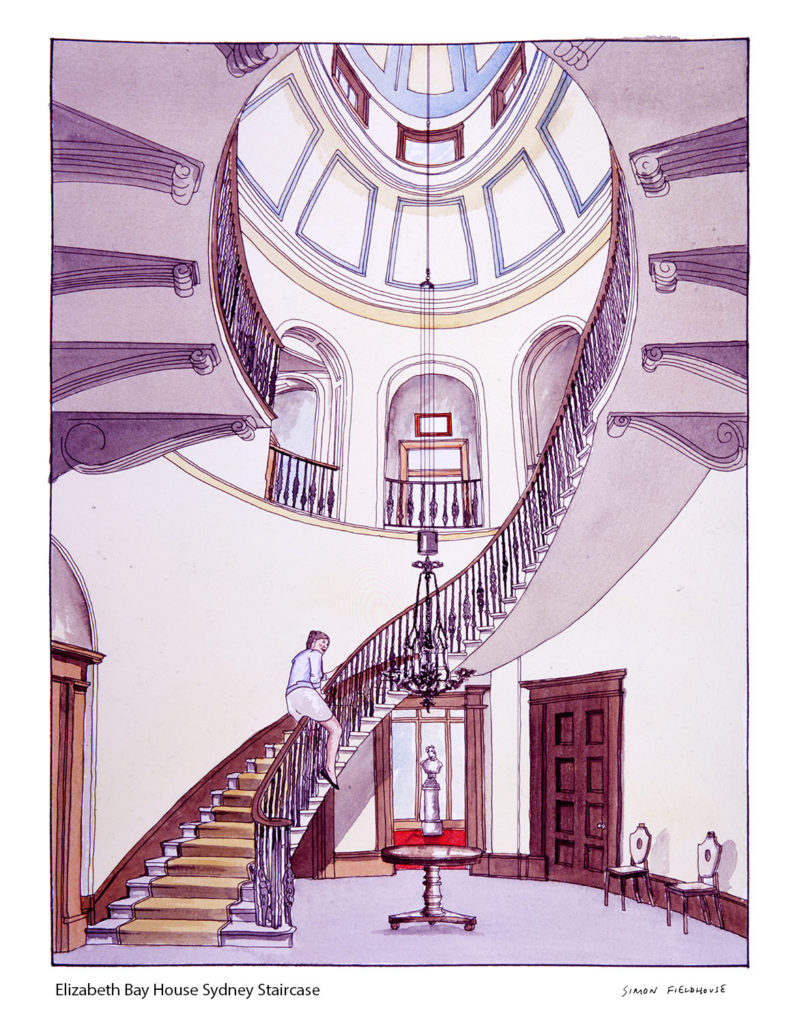
Elizabeth Bay House Sydney
Elizabeth Bay House, Sydney: A Glimpse into Australia's Architectural Heritage. Elizabeth Bay House, located in Sydney, New South Wales, stands as a testament to the grandeur and elegance of Australia's colonial history. Built in the early 19th century, this iconic residence has played a pivotal role in the nation's cultural and architectural heritage. The house, designed by architect John Verge, is a masterpiece of Regency architecture, exuding an air of opulence, innovation, and historical significance. This essay explores the history, architectural features, and the cultural importance of Elizabeth Bay House, shedding light on its enduring legacy.
Historical Context
Elizabeth Bay House was constructed between 1835 and 1839 for Alexander Macleay, the Colonial Secretary of New South Wales. It occupies a significant place in Australia's colonial history, reflecting the wealth and aspirations of the British gentry who settled in the colony during the 19th century. Macleay, a prominent figure in the colony, was instrumental in its scientific and cultural development, and his house would come to symbolize the era's sophistication and charm.
Architectural Features
- Regency Architecture: Elizabeth Bay House is a prime example of the Regency architectural style, which was fashionable in Britain and its colonies during the early 19th century. The house features a symmetrical and elegant façade with its signature wrought iron lacework verandas. The Regency style emphasizes balance, simplicity, and classical motifs.
- Grand Interiors: The interior of the house is equally stunning, with high ceilings, fine plasterwork, and an exquisite cantilevered stone staircase. The house is adorned with period-appropriate furniture and art, further enhancing its authenticity.
- Grounds and Gardens: The estate surrounding Elizabeth Bay House was also meticulously designed, incorporating geometric pathways, terraced gardens, and fountains. The gardens serve as an integral part of the house's charm, reflecting the 19th-century fascination with landscape design.
Cultural Significance
- Preservation of Heritage: Elizabeth Bay House is a key historical landmark in Sydney, and its preservation is indicative of Australia's commitment to protecting its colonial heritage. The house is open to the public and serves as a living museum, allowing visitors to step back in time and experience the grandeur of the 19th century.
- Educational Resource: The house offers valuable educational insights into the life and times of early colonial settlers. It provides a unique platform for teaching history, architecture, and art, contributing to the cultural enrichment of the community.
- Tourism and Economic Impact: Elizabeth Bay House has become a popular tourist attraction in Sydney. Its allure as a heritage site boosts tourism and supports the local economy. The influx of visitors positively impacts nearby businesses and the region as a whole.
- Architectural Inspiration: The architectural brilliance of Elizabeth Bay House continues to inspire contemporary designers and architects. Its Regency style remains influential in the field of architecture and serves as a reference point for those seeking to incorporate historical elements in their designs.
Conclusion
Elizabeth Bay House is a living testament to the colonial history, architectural prowess, and cultural significance of Australia. Its Regency elegance, historical importance, and ongoing preservation make it a cherished jewel in the nation's heritage. As a destination for tourists, an educational resource, and a source of inspiration for architects, this iconic residence plays a vital role in celebrating Australia's rich colonial past while leaving a lasting impression on those who visit and study it. Elizabeth Bay House's enduring legacy underscores its profound significance in the story of Australia.